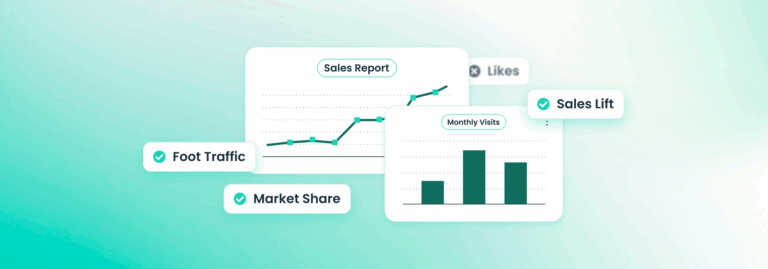Experienced marketers know which fixes to look into when an ad campaign isn’t performing the way it should. Obvious factors like messaging or daily budgets are all usual suspects. And often, these optimizations work. Soon, performance metrics like Return On Ad Spend (ROAS) or conversions will start to improve.
Every once in a while, though, they won’t make the impact we’re hoping for.
If you find yourself in a similar situation, it’s important to know the campaign is not a bust. There are four, often overlooked, that can not only correct a slow-performing campaign, but also generate the real business results you’re looking for, like boosting ROAS.
Let’s dive in.
1. Use Precise Audience Segments
The audience you target can make or break a campaign. Even the most compelling messages won’t work on the wrong people. Marketers know this and work diligently to reach the right people. But not all segments are created equal.
The media platform you use, and more importantly, the data that platform uses to build audience segments can make the difference between high ROAS and an underperforming campaign. For example, GroundTruth uses cookieless first-party data to build audiences based on verified behaviors. We go beyond online browsing and ensure that our audiences are built on real-world behavior.
If you want to ensure that your campaigns are reaching people with habits that matter (like physical visits and purchases), ask your media partners about the data they use to build audience segments. The answers they give may highlight why you can’t break your ROAS barrier.
2. Create an Aligned Customer Journey
Another factor that often goes overlooked is where users are in the customer journey when they see ads. All companies need to attract new customers, so all marketing teams focus on how much it costs to convert a new customer. But that’s not the whole story. Marketing teams also want new purchases from current customers.
Obviously, that means creating campaigns that are more than just retargeting ads or awareness campaigns. This audience needs specific marketing that speaks to their experience with your business, whether you’re a B2B or B2C company.
To optimize ROAS and other real business results, consider how you’re connecting with past, current, and potential customers. Are your messages specific enough to speak to where they are in the customer journey? Do you highlight the value of your products and services in the best way for what they need? If you’re struggling to achieve the ROAS you want, the answers to these questions will usually reveal opportunities to improve.
3. Improve Attribution Models
The next factor to consider is how you’re building reports and attributing the real business results to marketing efforts. One of the most common struggles marketers face is getting credit for the strategies they create.
GroundTruth built the foundation of our technology with identity graphs, which means our customers can easily identify the real business results created from their advertising campaigns. For example, they know when one of their ads drove someone to a store.
Armed with this information, they don’t have to rely on broad calculations of ROAS. They can make the connection between campaigns and revenue earned. As a result, they can build more informed campaign strategies, replicate successful audience segments, and repeat their success over and over.
If you’re having trouble understanding what boosts ROAS and what’s hurting it, make sure to look into your attribution and reporting structures.
4. Test the Ad Types for Your Goals
Finally, if you’re still unable to increase ROAS, dig into the ad types you’ve chosen. Are they right for the goals of your campaign? It seems like such a simple question, but in our experience, that means it often goes unasked.
We’ve seen it happen to companies in all industries. They use the same creative across all channels. Their direct mail piece looks like their mobile ad, which also looks like the ad that runs on Connected TV (CTV). While all these ads should have similar messages, they shouldn’t be duplicates of each other.
When creating a comprehensive campaign across multiple channels, remember the way people engage with those channels. Someone driving down the highway will have a lot less time to understand your product than someone leisurely scrolling through their phone. Your ad types and CTAs should reflect that.
Take a look at your entire campaign to ensure that you’re not asking too much (or too little) from your audience based on the goals of your campaign. There will likely be an opportunity to switch a few ad types and boost ROAS.
Boost ROAS with GroundTruth
If you want to learn more about how GroundTruth can help you improve ROAS and drive other real business results, like in-store visits or incremental sales, contact us today. We can get you set up with the best plan for your next campaign.





